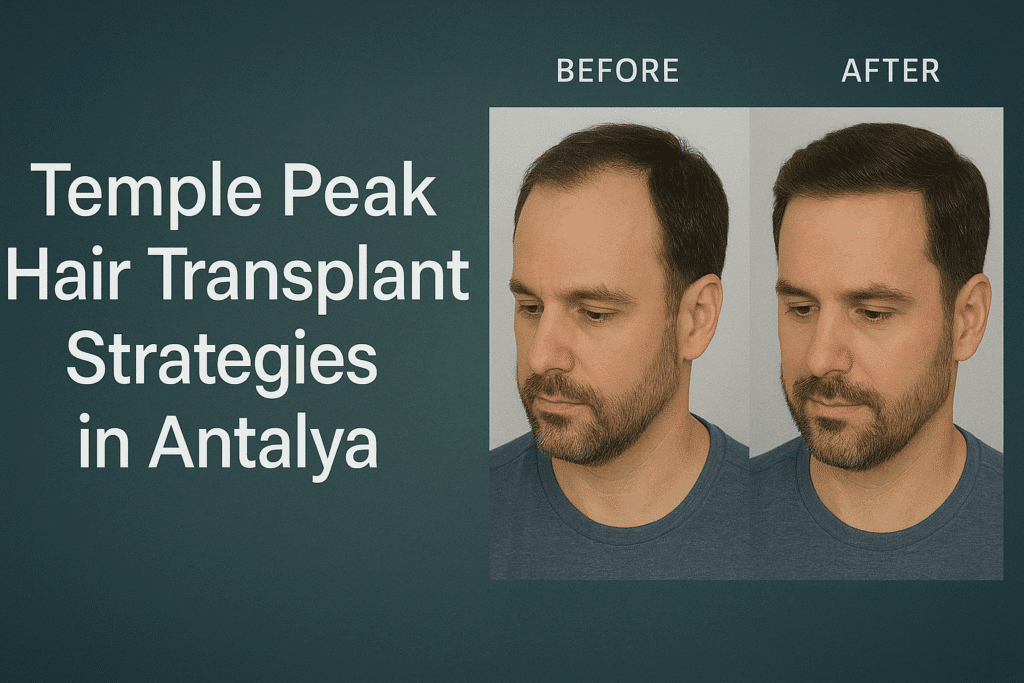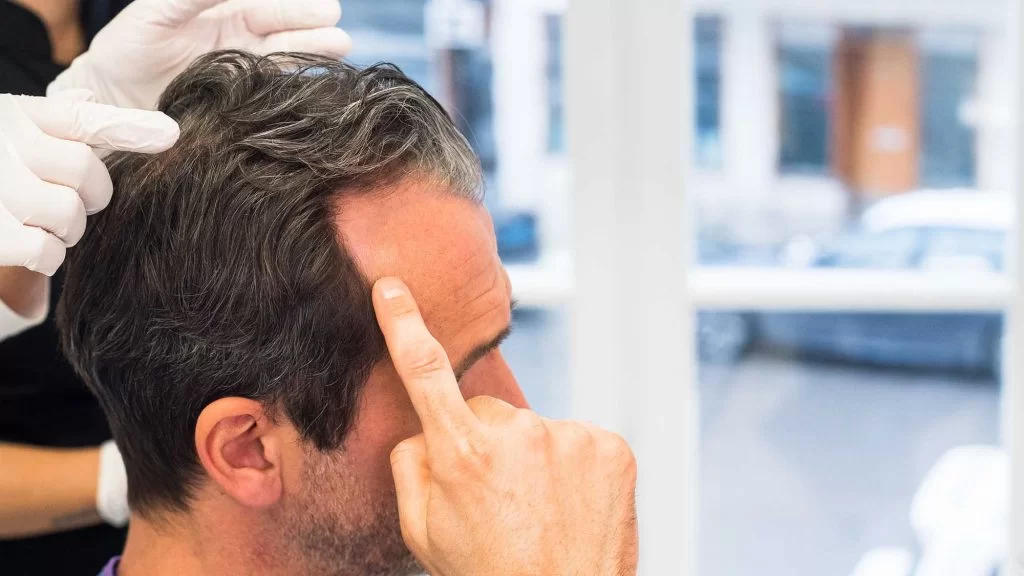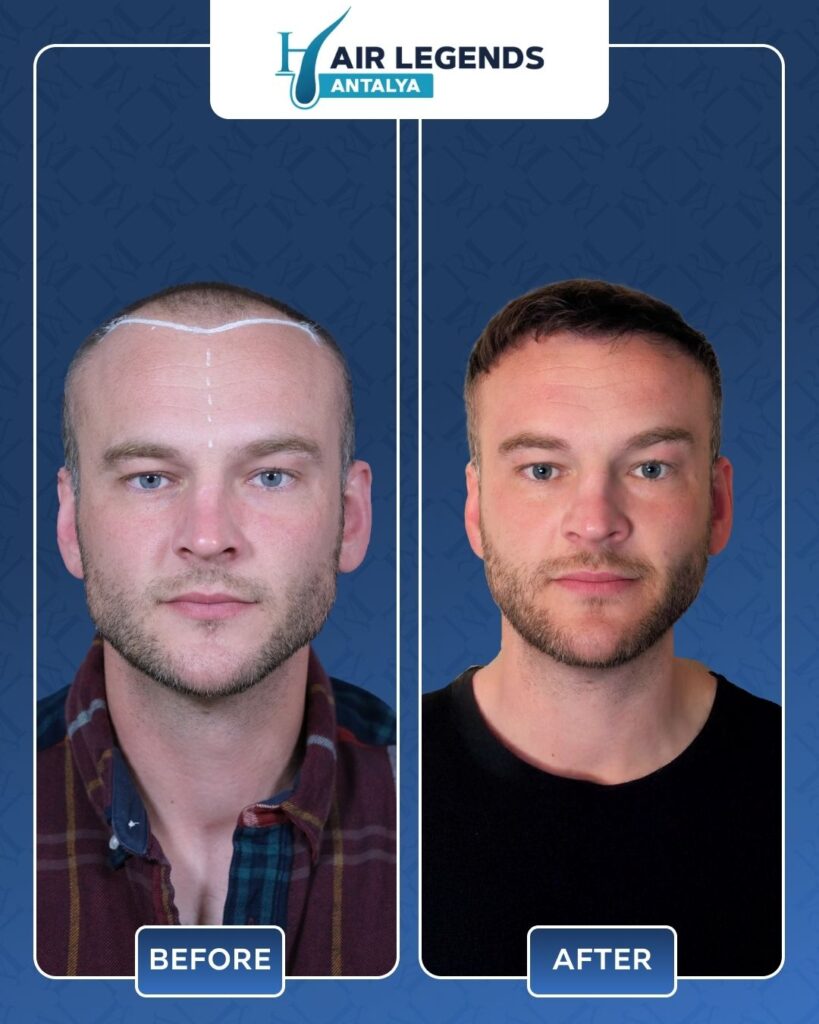
The Importance of Temple Peaks in Facial Harmony
The temple peaks, located at the outer corners of the hairline, are among the most defining features of facial balance. When a patient looks in the mirror, the temple peaks frame not only the forehead but also the eyes and overall profile. A well-defined temple peak creates youthfulness, sharpness, and balance between the hairline and the sideburns.
In many men experiencing hair loss, the temple peaks are the first areas to thin out. This results in a rounded or receded appearance, which can make the forehead look disproportionately wide. Women can also experience temple thinning, especially after pregnancy, hormonal changes, or genetic predispositions.
In Antalya, where medical tourism thrives, temple peak hair transplants have become one of the most sought-after procedures. Clinics such as Hair Legends Antalya specialize in temple peak reconstruction as part of a holistic hair restoration strategy. This region has earned global recognition for combining affordability with high medical expertise, making Antalya a top destination for temple peak hair transplant procedures.
Challenges in Temple Peak Hair Transplantation
Temple peak restoration is often considered more challenging than frontal hairline or crown transplants. The reason lies in the angle, density, and direction of the hair in this region. Unlike the central hairline, temple peaks require hairs to be placed at an extremely acute angle (often as low as 10–15 degrees).
If this angulation is not replicated, the results can appear unnatural, with hair sticking out rather than lying flat. Furthermore, temple hair is usually finer than other regions, demanding careful graft selection.
Clinics in Antalya have developed advanced techniques, especially with Sapphire FUE and DHI hair transplant Antalya methods, to replicate the delicate architecture of the temple peaks. The availability of experienced surgeons and high-end tools reduces the margin of error, ensuring natural and seamless integration.
Planning the Temple Peak: Consultation and Analysis

Every temple peak transplant begins with a thorough consultation and facial analysis. Surgeons in Antalya emphasize that temple design cannot be approached as a “one size fits all.” Instead, it must be tailored to each patient’s:
- Age and stage of hair loss
- Existing frontal hairline shape
- Facial proportions
- Ethnic background
- Gender-specific aesthetics
For example, a younger male may require a sharper, more triangular temple design to restore masculinity, while an older patient may need a softer, conservative approach that matches age-related facial features.
The best clinics in Antalya use digital hairline design software and 3D imaging to simulate how temple restoration will look, giving patients confidence before surgery.
Hair Direction and Temple Peak Angulation
Temple hair grows extremely flat against the skin. This makes the angulation process the single most important technical step. If grafts are placed too upright, the outcome will never blend naturally with the existing side hairs.
Surgeons in Antalya use ultra-fine sapphire blades or implanter pens that allow for micro-incisions at the correct direction. Each follicle is oriented not just in the right angle but also the right flow – temple hair tends to sweep backward toward the ears.
Correct angulation is also vital for female temple peaks, where hair needs to blend with finer frontotemporal strands. Patients who travel to Antalya often choose clinics that have mastered this level of detail, ensuring that results are indistinguishable from natural growth.
Before and After Hair Transplant: Temple Restoration Results

Before a temple transplant, patients typically show:
- A hollowed or concave appearance on the sides of the forehead
- Loss of the sharp triangular outline of the temple
- A disconnected look between the sideburns and frontal hairline
After transplantation in Antalya, results include:
- A youthful and angular frame around the forehead
- Restored symmetry between left and right temples
- A smoother connection with the frontal hairline and side hair
High-resolution before-and-after photos from Antalya clinics reveal the dramatic improvement temple transplants can bring. International patients often share reviews praising not only the natural look but also the affordability compared to their home countries.
Managing Hairline Symmetry Across Both Temples
One of the most important temple peak strategies is achieving bilateral symmetry. A slight mismatch in angle, density, or height between the left and right sides can make the hairline appear unbalanced.
Surgeons in Antalya typically design both temples simultaneously during the consultation. Using reference lines, proportions of facial thirds, and the golden ratio, they ensure each peak matches harmoniously.
For patients with advanced hair loss, restoring symmetry across both temples can be life-changing. The temples reframe the face, reducing the appearance of a receded hairline and giving a more structured look.
Temple Peak Strategies for Female Hairlines
While temple peaks are often discussed in the context of male hair loss, women also benefit greatly from temple restoration. Female temple thinning often manifests as diffuse hair loss or widening of the part line, particularly around the temples.
Temple transplants for women in Antalya focus on:
- Using finer single grafts for natural blending
- Avoiding overly sharp or masculine designs
- Maintaining softness around the hairline edges
- Addressing postpartum or traction alopecia cases
This procedure not only restores volume but also improves confidence, especially for women who prefer hairstyles pulled back from the face. Antalya has become a hub for women seeking discreet and natural temple transplants, thanks to advanced surgical artistry.
Ethnic Variations in Temple Peak Design
Temple peak strategies differ depending on ethnic backgrounds:
- Caucasian patients: Typically prefer a sharp, well-defined triangular peak.
- Middle Eastern patients: Favor a denser and straighter temple outline.
- Asian patients: Require softer designs with finer grafts.
- African descent patients: Need attention to curly hair angulation and texture.
Antalya’s position as a global medical tourism hub means surgeons there are experienced with a wide variety of ethnic hair types. Clinics often emphasize their versatility in creating temple designs that respect cultural and individual aesthetics.
Surgery Day Protocol for Temple Peak Cases
On the day of surgery, patients undergoing temple peak restoration in Antalya can expect:
- Arrival and preparation – including blood tests and scalp shaving (partial or full).
- Design confirmation – surgeon finalizes temple outline with patient input.
- Anesthesia – local or hair transplant with sedation Antalya options for comfort.
- Graft extraction – usually via Sapphire FUE for precision.
- Incision making – micro-incisions created at acute angles for temple hair.
- Implantation – grafts placed carefully to match natural flow.
- Post-surgery bandaging and instructions – patients are guided on aftercare.
With Antalya’s luxury hair transplant packages, patients often also enjoy private transfers, 5-star hotel stays, and personalized care, making the entire journey comfortable and memorable.
Post Surgical Care and Temple Peak Maturation
After temple transplantation, the first two weeks are crucial for graft survival. Patients are advised to:
- Avoid touching or scratching the temples
- Sleep in an elevated position to reduce swelling
- Follow clinic-guided washing protocols
- Protect the temples from direct sunlight
Shedding of transplanted hairs occurs around weeks 2–4, which is completely normal. New growth typically starts at 3–4 months, with temple hairs taking up to 12–15 months to fully mature.
Antalya clinics provide ongoing aftercare, often including PRP therapy or exosome treatment to boost graft survival and improve temple hair quality.
Results Over Time: Achieving Final Temple Aesthetics
Temple transplant results improve gradually:
- 1–3 months: Initial shedding, followed by thin regrowth
- 4–6 months: Noticeable density increase in temple areas
- 9–12 months: Temple outline becomes sharper, blending with natural hair
- 12–15 months: Final maturation, full natural look achieved
Patients who travel to Antalya often return home after surgery and receive virtual follow-ups via photos and video calls. By one year, temple peaks usually look fully integrated, giving patients renewed confidence and a youthful, balanced face.
Conclusion
Temple peak hair transplant strategies require precision, artistry, and advanced surgical skill. Unlike other areas of the scalp, temple restoration is all about subtlety – the correct angles, density, and design can make the difference between a natural result and an artificial look.
Antalya has become a world leader in temple peak hair transplant procedures, attracting thousands of international patients each year. With its combination of cutting-edge technology, highly trained surgeons, and affordable packages, Antalya offers one of the best solutions globally for anyone struggling with temple recession.
For men and women alike, restoring temple peaks is not just about hair – it’s about restoring harmony, balance, and self-confidence. Choosing the right clinic in Antalya ensures that the journey to natural temple peaks is smooth, safe, and rewarding.
